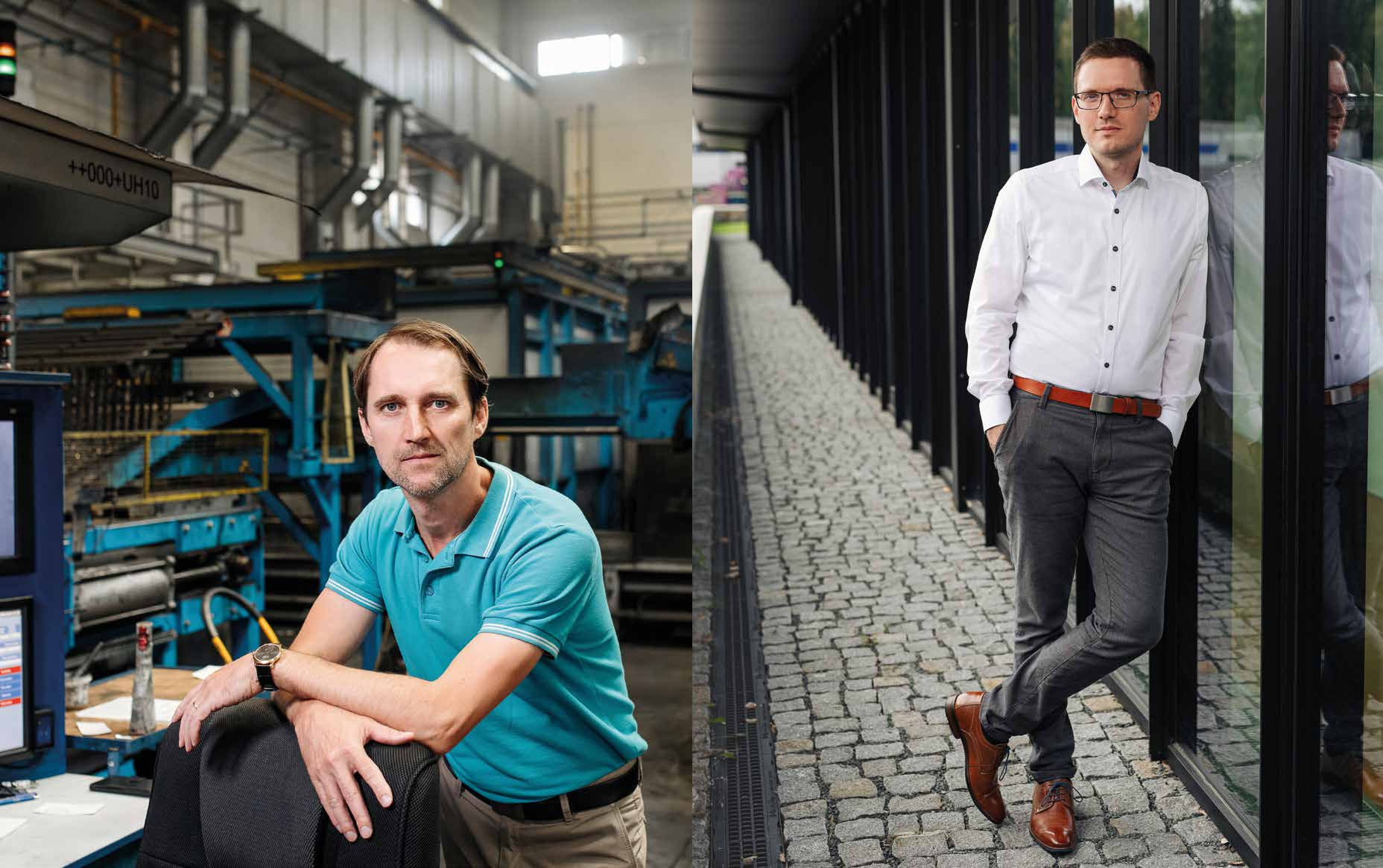
4 minute read
Our customers appreciate proactivity
from MTX GROUP MAGAZINE 2023 eng
by MTX Group
We spoke to Strojmetal Aluminium Forging Development Director, Marek Vejnar (MV), and Key Account Manager at Strojmetal Singen, Oliver Hander (OH), about the development of new parts and how our customers are grateful when we come up with our own solutions that are both functional and efficient.

Marek Vejnar, Development Director at Strojmetal Aluminum Forging, and his team are in charge of CAD construction, forging technology, machining technology, CNC programming, and project management. His job also includes continuous improvement and research and development.

Oliver Hander, Key Account Manager at Strojmetal Singen in Germany, is responsible for customer service and market expectations. His customers include Mercedes-Benz, MercedesAMG, BMW, and THK.
What do you see as Strojmetal’s biggest business and development advantages, compared to the competition?
Oliver Hander: Personally, I’d say that one of Strojmetal’s biggest advantages is its vast experience in the field of aluminum forging. This allows us to manufacture parts that fit perfectly into the designated space in the car but also into our production process. We offer the whole range of geometries for car and van suspension. Another example of our added value is our parent company, MTX Group. With the support of the group, we can invest in the future and develop as a global player in the forging sector.
Marek Vejnar: I would add that we are a very flexible company that is able to develop and implement projects in a short period of time. We have experts in construction and technology development as well as our own tool shop in which we are able to manufacture prototypes as well as final products. In today’s unstable environment, customers truly appreciate flexibility and adaptability.
What distinguishes Strojmetal the most from the competition in the context of development?
Oliver Hander: Nowadays, the bulk of development in the automotive industry is carried out by specialists and external companies who don’t supply the entire component in-house. This is what makes Strojmetal different. We supply complete components for the automotive industry and are able to develop and manufacture them entirely in-house.
Marek Vejnar: Strojmetal has comprehensive expertise to develop and launch projects for demanding automotive industry customers. That is rare. It gives us an edge over our competitors.
What is the difference between development and pre-development?
Oliver Hander: Usually, the development of new car models begins several years before they are sold on the market. If a customer contacts Strojmetal with specific requirements involving development, it usually means they have already taken care of the pre-development. If we were able to participate in the pre-development process and support the customer even earlier, we would be able to adjust the design to better fit our production facilities.

Do clients appreciate a proactive approach and new ideas from a supplier?
Oliver Hander: They appreciate proactivity greatly. Customers, especially original equipment manufacturers, expect a strong supplier that is able to meet all current and future market requirements. New ideas and practices are always welcome and rewarded. That is why we need to be flexible and take a proactive approach to any future challenges.
How often do things change during projects and how do we deal with it?
Oliver Hander: Thanks to computer-aided design (CAD), you can now literally change the design with a click of the mouse. This is one of the reasons why the automotive industry is becoming increasingly accustomed to the number of design changes during and after the demand phase. Development and sales departments need to be able to handle them in order to fully meet the customer’s expectations.
Take the recent improvement of BOGE parts. What does it consist of?
Marek Vejnar: BOGE parts have specific structure and were never forged from aluminum. The last generation of cars used pressed sheet metal. It serves as a transmission holder for the Mercedes-Benz C-Class, E-Class, and S-Class. Due to the function of these components, they need to be highly geometrically precise. AKKODIS reviewed all of our designs of the parts and suggested improvements. For the next generation of cars, BOGE parts will be made of two pieces instead of one. The new design fully retains the part’s functionality, saves material, and resolves the current technical production problems.
What other improvements are you currently working on?
Marek Vejnar: The BOGE parts design analysis was unique and there is currently no similar type of project in the pipeline. But our multidisciplinary team, including technology, design, production, and quality control, is continuously researching potential improvements.










